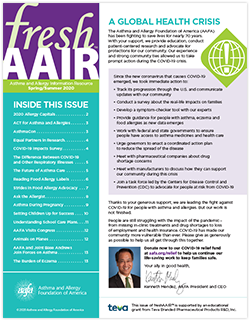Labeling laws in the U.S. only make food companies label the top eight most common allergens: milk, egg, peanuts, tree nuts, wheat, soy, fish and shellfish. But there are loopholes that can be confusing. These label reading tips will help prevent accidents.
![]() Do check every label, every time. If you can’t read the label, don’t eat the food.
Do check every label, every time. If you can’t read the label, don’t eat the food.
![]() Do be wary about precautionary advisory labels (allergy warning statements). Statements like “may contain” or “processed in a facility with...” may not be accurate or consistent. They are not always a good measure of whether a food contains your allergen.
Do be wary about precautionary advisory labels (allergy warning statements). Statements like “may contain” or “processed in a facility with...” may not be accurate or consistent. They are not always a good measure of whether a food contains your allergen.![]() Do check labels on every package of the same food. They may have different ingredients or advisory labels.
Do check labels on every package of the same food. They may have different ingredients or advisory labels.
![]() Don’t only look for bold. Companies are not required to use bolded font on all food allergens. You must always read the entire ingredients label!
Don’t only look for bold. Companies are not required to use bolded font on all food allergens. You must always read the entire ingredients label!
![]() Don’t expect a safe food to always be safe. Food companies can change ingredients and processes at any time. You must always read the entire ingredients label!
Don’t expect a safe food to always be safe. Food companies can change ingredients and processes at any time. You must always read the entire ingredients label!
![]() Don’t rely on terms like “allergy safe,” “classroom safe” or “allergy free.” The food may still contain your allergen. You must always read the entire ingredients label!
Don’t rely on terms like “allergy safe,” “classroom safe” or “allergy free.” The food may still contain your allergen. You must always read the entire ingredients label!
 Sign up for our FREE asthma and allergy magazine – freshAAIR™! Get our latest issue full of information on ways you can manage food allergies, asthma and other allergic conditions.
Sign up for our FREE asthma and allergy magazine – freshAAIR™! Get our latest issue full of information on ways you can manage food allergies, asthma and other allergic conditions.Read online or have it delivered to your inbox.

Comments (0)